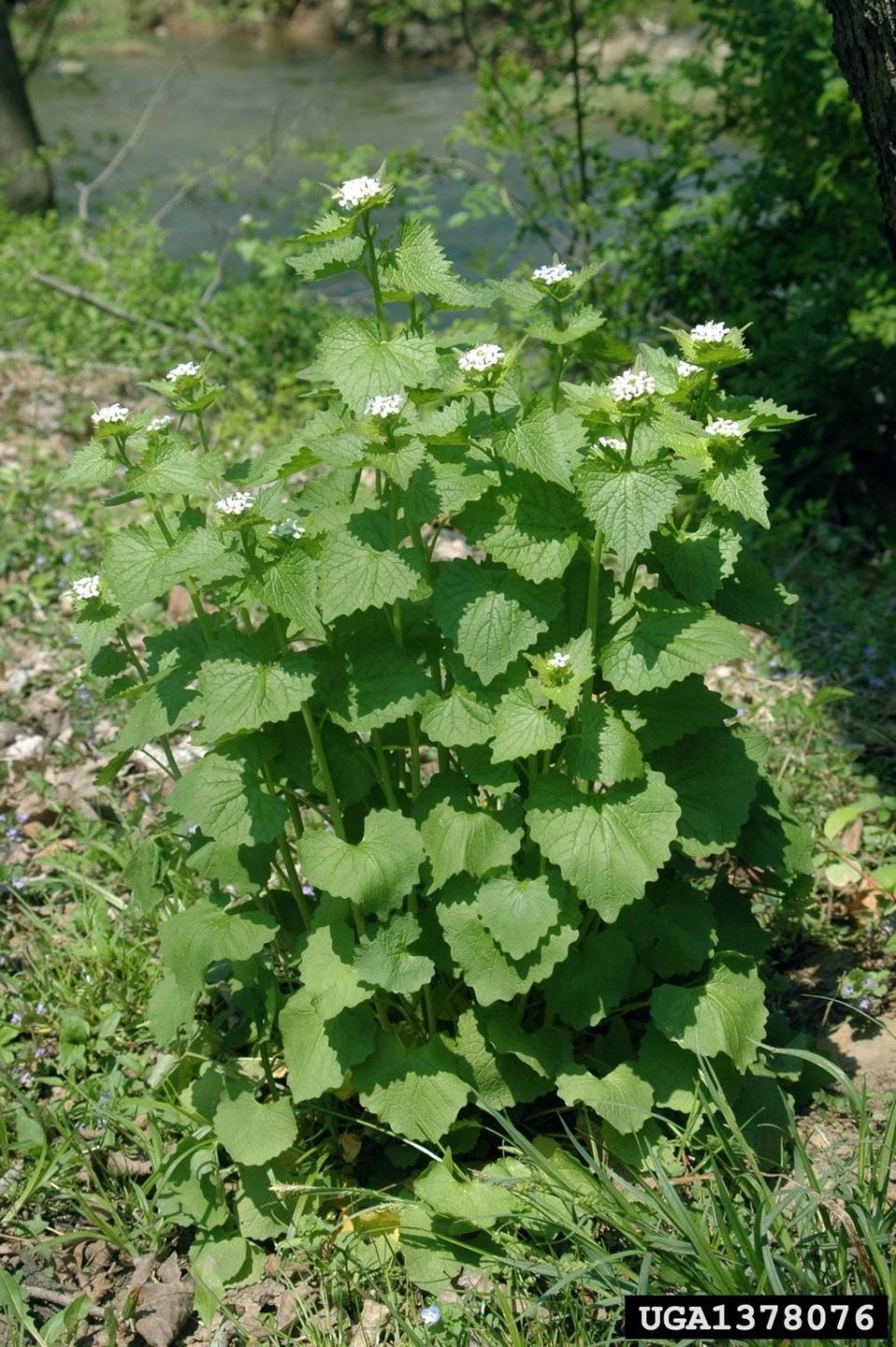Baker: A lamentation on garlic mustard
It’s sort of a perfect storm of a plant.
Not to put too fine a point on it, garlic mustard, Alliaria petiolata, is a bad actor. That is, at least in North America. In its native range in Europe and Western Asia, it’s generally viewed as a fine, upstanding citizen of woodland ecosystems.
As we’ve seen with so many other invasive plants − Japanese honeysuckle, kudzu, purple loosestrife, multifloral rose, and Tree of Heaven, to name just a few − garlic mustard wasn’t considered much of a problem until it was intentionally introduced here.
A 1998 study by Swiss researchers provides a clue to what’s going on. An extensive review of the literature found 69 insect species and seven fungi that play significant roles in controlling European populations of garlic mustards. However, in North America, only six groups of insects and two fungi were found to attack the plant, and these with “little consequence to plant performance or reproduction.”

Few enemies in North America to control plant spread
So, virtually no enemies on this side of the Atlantic to keep the species in check. But why is that such bad news? We need some biology to address that question.
Garlic mustard is a biennial plant (possessing a two-year life cycle) that was introduced to North America in the 1800s as a cooking and medicinal herb. But it soon escaped colonial gardens and is now found in wooded areas throughout the Northeastern, Midwest and Northwestern states.
During its first year, the plant consists of a rosette (crowded circlet) of heart-shaped leaves lying close to the ground. At this stage, the plant’s job is to create energy-rich nutrients through photosynthesis and to store them in its long root. Unlike most other plants on the forest floor, the rosette stays green throughout the winter months.And this means that in the earliest days of spring, the second, more familiar life-stage has the energy to bolt 1-3 feet to its mature, reproductive form before most other herbaceous plants have gotten much of a start.
The plant’s single stem bears a number of triangular, coarsely toothed leaves with bunches of small, four-petaled white flowers clustered at its top. When crushed, the leaves of either a first or second-year plant smell strongly of garlic.

Garlic mustard can inhibit growth of native wildflowers
The shade cast by dense stands of these tall plants inhibits the growth of native woodland wildflowers like spring beauties, cut-leaved toothworts and bloodroot, and have been shown to reduce the survival of sugar maple, red maple, oak, and black cherry seedlings.
But it’s not just shade that’s problematic. The plant’s roots exude phytotoxic compounds that not only impact neighboring wildflowers but inhibit the beneficial fungal networks (called mycorrhizae) that are essential to the growth of most species of trees.
And while deer will eat almost anything green, they don’t like the taste of garlic mustard leaves, which leads them to feed more heavily on native herbaceous plants.
The plant can 'self-fertilize:' No pollination needed
There’s more. Although they can reproduce sexually, garlic mustards also can “self-fertilize,” meaning they don’t require insects or other animals for pollination. Each plant can generate several hundred seeds, with dense stands shown to produce upwards of 60,000 seeds per square yard. And each of those tiny seeds can remain viable in the soil for a decade or more.
To recap: In its native range in Eurasia, garlic mustard has been prized for centuries for its medicinal properties and as a spice. But when colonists brought it to North America in the early 1800s, it soon escaped cultivation and spread rapidly throughout our forests.
With no significant herbivores to control its populations, the ability to self-pollinate, the toxicity of its roots and leaves, and its tendency to produce dense stands of second-year reproductives creating masses of long-lived seeds…garlic mustard amounts to a perfect storm situation for our native woodland herbaceous and woody plants.What can be done?
Tall, second-year plants are surprisingly easy to pull out of the ground. As I walk along a forest path this time of year, I’ll often stop to pull up a plant, making sure to get the root. But note that once they’ve started producing their slender seed pods (called siliques), you can’t just leave an uprooted plant on the ground. The seeds will still be viable.
No quick fix to controlling the growth
Cutting, hoeing and herbicides have all been used, but each has its problems. So, what about bringing over one or two of those herbaceous insects from Europe that have been so successful at keeping garlic mustard populations in check?
Unfortunately, most of those species would probably also impact other types of plants. However, four species of weevils belonging to the genus Ceutorhynchus do appear to specialize on garlic mustard, and are showing promise as a potential form of biological control.
Out of an abundance of caution, the USDA’s Technical Advisory Group continues to block repeated petitions for the release of any of these beetles.
Ken Baker is a retired professor of biology and environmental studies. If you have a natural history topic you would like Dr. Baker to consider for an upcoming column, please email your idea to fre-newsdesk@gannett.com.
This article originally appeared on Fremont News-Messenger: Baker: Tough to keep garlic mustard under control in United States

